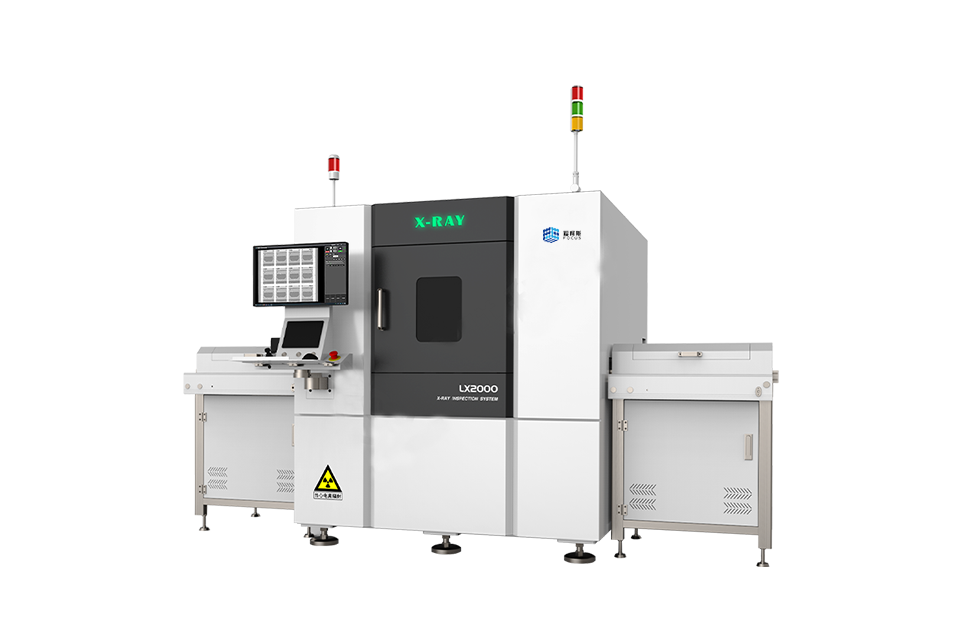Advancing Automotive Manufacturing with Industrial CT Scanning Equipment
2025-05-15 00:00
As the automotive industry continues to push the boundaries of innovation, ensuring the highest quality standards in parts and components has become more crucial than ever. In recent years, Industrial Ct Scanning Equipment has emerged as a game-changer for automotive manufacturers. This cutting-edge technology allows for detailed, non-destructive inspection of automotive parts, ensuring that each component meets rigorous safety, performance, and durability standards. By integrating CT scanning into the manufacturing process, automakers can significantly enhance quality control, streamline production, and reduce costs.

How Industrial CT Scanning is Transforming Automotive Manufacturing:
Industrial CT scanning provides automotive manufacturers with the ability to visualize the internal and external structures of complex components in 3D. Unlike traditional inspection methods that may require destructive testing or disassembly, CT scanning allows manufacturers to inspect components in their entirety without compromising their integrity. This is especially valuable for intricate parts such as engine blocks, transmission systems, and structural components, which require precise and fault-free design and manufacturing.
Applications in Engine and Powertrain Components:
One of the most critical areas where industrial CT scanning excels is in the inspection of engine and powertrain components. Parts like cylinder heads, crankshafts, and connecting rods must be free from internal defects such as cracks, porosity, or voids that could lead to catastrophic failure. Industrial Ct Scanning Equipment can detect such flaws before the components are assembled into vehicles, reducing the risk of defects that could compromise engine performance or safety.
For example, by using CT scanning, manufacturers can identify hidden cracks or imperfections within the metal casting of engine blocks that would otherwise go unnoticed by traditional inspection methods. This ensures that only components that meet the highest standards of quality are used in vehicle assembly, improving both performance and reliability.
Ensuring Safety and Durability of Structural Parts:
Automotive manufacturers are increasingly turning to advanced materials to improve the safety and durability of their vehicles. However, these materials, such as high-strength steels and aluminum alloys, can be challenging to inspect using traditional methods. Industrial CT scanning provides a solution by offering highly detailed 3D imaging of the internal structures of these parts.
By scanning structural components like chassis, suspension systems, and crash barriers, manufacturers can ensure that the components have been correctly manufactured without any internal flaws that could affect their strength or safety. This level of inspection is particularly important for meeting regulatory safety standards and ensuring that the vehicle can withstand impact in the event of a collision.
Enhancing the Production of Complex Parts:
With the rise of 3D printing and additive manufacturing in the automotive industry, the production of complex, customized parts is becoming more common. However, ensuring the quality and precision of these parts remains a challenge. Industrial CT scanning plays a crucial role in validating the internal and external structures of 3D-printed components, such as those used in lightweight vehicle construction and electric vehicle (EV) battery systems.
By using CT scanning to examine the layers of 3D-printed parts, manufacturers can identify any inconsistencies or defects in the material or design that may affect performance. This ensures that the parts are functional, durable, and safe, even in the most innovative and cutting-edge automotive designs.
Streamlining Reverse Engineering and Product Development:
Industrial Ct Scanning Equipment also plays a significant role in reverse engineering and product development within the automotive industry. When manufacturers need to analyze legacy parts or competitor products, CT scanning allows them to create accurate 3D models of the components, enabling a better understanding of their design and performance. This can be particularly valuable when designing replacement parts, improving existing designs, or evaluating new technologies.
Furthermore, during the development phase, CT scanning provides automotive engineers with invaluable insights into the behavior and performance of prototype parts, allowing them to identify and address potential issues early in the design process. This accelerates product development timelines and ensures that new vehicles meet all performance and safety criteria before reaching the market.
As the automotive industry evolves, so too must the technologies used to ensure the highest standards of quality and safety. Industrial CT scanning equipment is poised to become an indispensable tool for automotive manufacturers, offering a non-destructive, high-resolution method for inspecting and analyzing the internal and external features of complex components. Whether inspecting engine parts, structural components, or advanced materials, CT scanning technology ensures that only the highest quality parts make it into production, ultimately enhancing vehicle performance, safety, and reliability. By integrating this advanced technology into the manufacturing process, automakers can stay ahead of the competition, improve their bottom line, and meet the demands of the modern automotive market.
2025.09.30

2025.09.23









